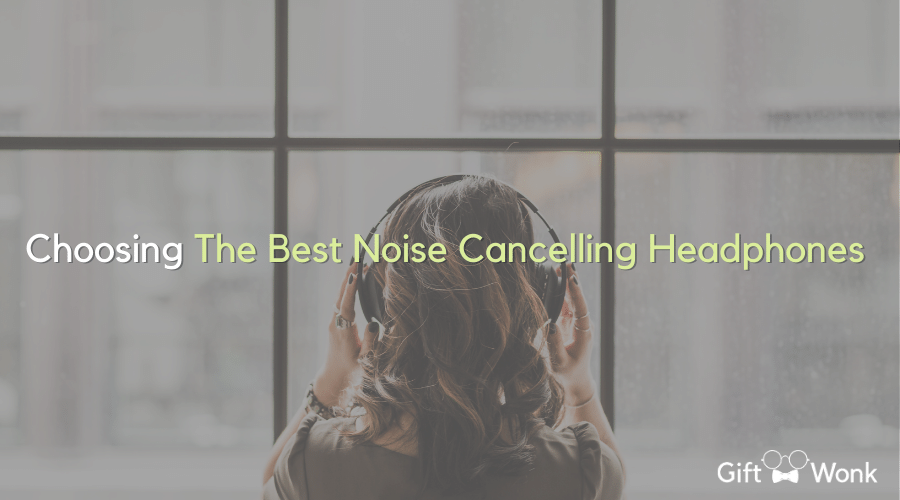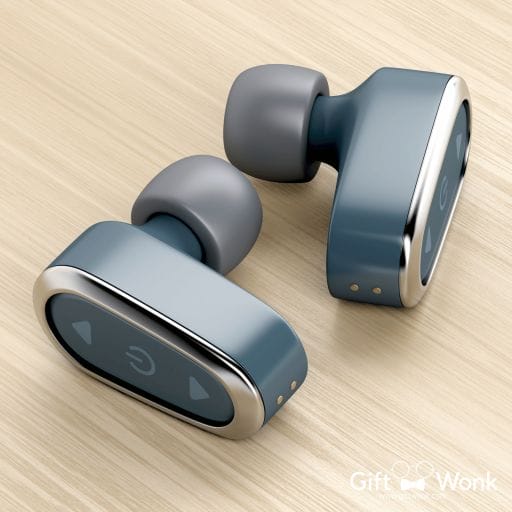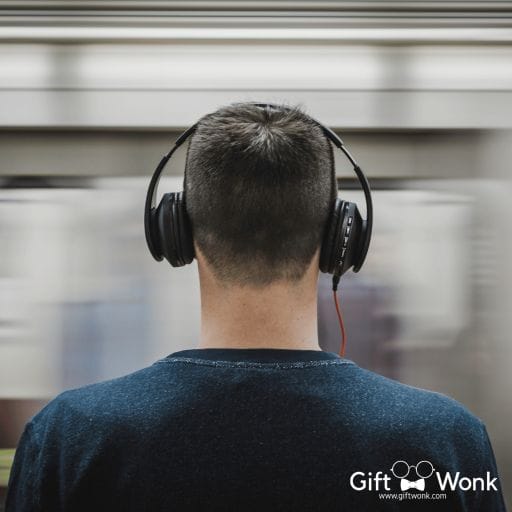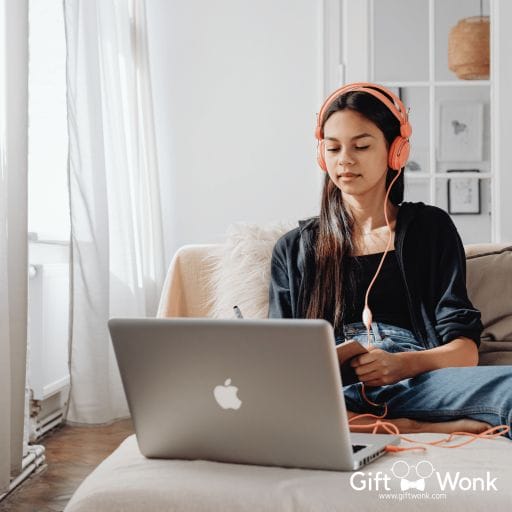
!! DISCLAIMER !! This site may contain Amazon & other affiliate links.
This means if you click on one of the product recommendation links, this site may receive a small commission. This is at no extra cost to you and may include exclusive discounts when possible. This helps support this site and allows us to keep making content like this. Thank you for your support!
Choosing The Best Noise Canceling Headphones
Noise-cancelling headphones are our saviors in this noisy environment, but we must be able to choose them correctly. Different conditions and noises need the use of different headphones.
When you acquire the best noise cancelling headphone pair you want, it may have positive ratings all over the place. However, you may be upset since it did not meet your expectations.
This is why we will go through everything you need to know before making your decision:
- How do noise-cancelling headphones function?
- What kinds of noise cancellations are there?
- What is the best noise cancelling headphones for you?
- How do you select the best headphones?
So, let’s get started.
The Fundamentals of Noise Canceling Headphones

Active noise cancellation dates back to the 1930s, and noise-cancelling headphones have been a part of the tale for quite some time. Bose and Sennheiser were the first firms to produce these. The entire story is thrilling, but that’s a topic for another post.
Let’s start with the many types of noise cancellation:
- Passive noise cancellation
- Active noise cancellation
- Adaptive noise cancellation
Passive noise cancellation is more popular and pervasive, but active and adaptive noise cancellation entered the scene much later. People frequently mix up active and adaptive noise cancelling, so we’ll review each separately.
Passive Noise Cancellation (Noise Isolation)
Passive noise cancellation is represented by the hefty headphones that seal around your ear with huge earcups.
It’s all about isolating your ear from the noise by shielding it with some material. There is no technology involved in this; passive noise-cancelling is achieved through the physical characteristics of the earphone.
This is possible with practically all types of headphones:
Over-ear Headphones
These headphones completely enclose your ear, causing a small pressure where no air passes through the earcup. The padding or earcup cushions help to block out external noise to some level, which is known as “passively cancelling the noise.”
On-ear Headphones
These sit directly on your ear and do not cover it. When you put them on, you will notice how your ears press against your head as the headphones seal tightly around it. Passive noise cancelling works in the same way, but with fewer bulky cushions and more pressure on your head.
In-ear Headphones

Regular earbuds that come with new smartphones. This generally consists of plugs that fit into your ear canal and block out the sounds. You can achieve the same effect by covering your ears with your fingers.
What is the best type of headphones?
When choosing between these, consider the setting in which you will use them. If you don’t want to listen to music or have any auditory support, you can go for cheap, high-quality earmuffs. This provides no audio but excellent passive noise cancellation to keep your hearing safe.
If you intend to wear headphones for an extended period of time, over-ear headphones are the most comfortable option. They may be big and hefty, so you should choose a lighter pair for yourself. If you use on-ear headphones, you may have headaches after a couple of hours.
When it comes to highly noisy surroundings, in-ear headphones aren’t as good as padded versions because they don’t give as good passive noise cancellation. Furthermore, the increased pressure on your eardrums may cause hearing damage. Short intervals of moderate volume will be most effective here.
Active Noise Cancellation (ANC)
Active noise cancellation can be used in conjunction with passive noise cancellation. Assume you select the same over-ear or on-ear headphone pair that has active noise cancellation. You receive both passive (earcup cushioning) and active cancellation (built-in mics, noise-cancelling technology).
It should be noted that ANC can also be found in in-ear headphones or earbuds.
Each earcup has built-in microphones that pick up extraneous sound before it reaches your ears. The noise cancellation circuitry (in-built audio processor) next identifies the microphone input and records the amplitude and frequency of the soundwave.
It then produces an anti-sound to the original sound. The noise-cancelling circuitry combines the original and anti-sound and sends it to the headphones’ speaker.
To make the procedure function, you will need energy supplied by a battery (also an important indicator for choosing headphones).
The battery influences the headphones’ weight and price; once it runs out, you can continue to use the headphones without ANC.
As a result of this complete procedure, the anti-sound removes the external low-frequency unpleasant noise while keeping the desirable audio and allowing you to listen to what you want.
Adaptive Noise Cancellation
This is the standard active noise cancelling with a slightly modified idea. Simply put, it’s a new word in the headphone market that refers to more tailored noise cancelling.
It adjusts the cancelling strength depending on the type and level of noise. If the surrounding external noise is loud, noise cancellation becomes more intense. As a result, the lower the adaptive cancellation, the lower the noise.
Typically, you may regulate the level of noise cancellation you require via a mobile app provided by the company from which you purchased the headphones.
Some pairs change the cancellation in real-time, so the procedure is automated, and you cannot meddle. However, you must exercise caution because increased noise cancellation may have an influence on voice quality.
If you choose this form of cancellation, you will be much more conscious of your surroundings. You will be able to hear critical conversations or announcements, and in some instances, staying attentive will be easier.
Choosing The Best Noise-cancelling Headphones

It’s not easy to find noise-cancelling headphones. Plenty of types claim noise isolation or active cancelling. Still, some accomplish it better than others, some at the sacrifice of music quality, and some are simply weak budget headphones that do little more than turn up the volume to block out the noise. Here are some things to check for when purchasing.
Decide What Kind Of Headphones You Want
Aside from active vs. passive or noise-cancelling vs. noise isolating, you should also become acquainted with the various varieties of headphones available and determine if you want earbuds, earpads, or full-sized headphones.
We’ve discussed the benefits and drawbacks of each, and there are active and passive models in every category, but the form factor is just as crucial (if not more important) than the sort of noise cancellation you’re looking for.
If you want active noise cancellation, you could prefer full-sized ones that wrap around your entire ear—it adds a passive hand to the active noise cancellation mechanism. On the other hand, if you’re using earbuds, you might just need noise isolation—if anything at all.
Determine How Much Money You Want To Spend
Premium noise-cancelling costs a premium. Because active cancelling headphones have their own audio processor, the quality of the processor (and its circuit) has a significant role in the device’s pricing.
Similarly, the cost is affected by the build quality, internal drives, size, and shape. If you want amazing audio and noise cancellation, you’ll have to pay for it. If you only need one or the other, you might be able to save some money.
This isn’t to say there aren’t some bargains to be had, but those $40 no-name noise-cancelling headphones from Woot? They’re fantastic for quiet offices, but they’re not going to make sleeping on an aircraft any easier.
Again, you don’t have to empty your bank account, but the better models cost hundreds of dollars rather than dozens.
Try Them On
If possible, try on the headphones you wish to buy and activate their noise-cancellation function. If they’re passive, just obtain a really snug fit in, on, or around your ears. Put them on and turn them on in the store if they’re active.
Listen carefully without music to discover how well you can make out background sounds. If you’re with someone, try having them speak to you from different distances to see if you can hear them. Your pal won’t be able to simulate a jet engine, but they will be able to simulate the talk from across the room.
Take note of the fit as well. Do you think you will be able to wear these for a long time? Will they become bothersome on the second hour of a six-hour journey, or will they begin to damage your ears while you’re seated at your desk?
Worse, will you become entangled in cables if you wear them while cleaning out the garage? You don’t have to settle for corded, heavy, unpleasant noise-cancelling headphones just because they’re noise-cancelling. Before making a decision, shop around and try on as many models as possible.
Try All Of The Features

Many people purchase noise-cancelling headphones only for the purpose of blocking out sounds. They activate the noise suppression circuit and do not listen to music at all. That’s fantastic if that’s you.
However, if you wish to listen to music or podcasts, you will need to conduct additional testing. Load up your smartphone or music player with a few of your favorite music. You may also download a few Eminent multimedia test files and see whether you can plug the headphones into your device while shopping.
This will give you a better idea of how your music will sound coming from your own smartphone with noise cancellation enabled and disabled. If you love your music uncompressed and lossless, now is the time to free up some space on your phone so you can take some of those songs with you.
You’ll soon notice the differences between headphones that prioritize noise cancellation over audio quality, but you’ll also notice which ones genuinely sound better.
Examine The Battery Life And Warranty
When purchasing an active cancelling pair, keep in mind that an audio processor within requires electricity. That means they are more than just a pair of drivers linked to your head: there are electronics that can fail, and you’ll want to be able to repair or replace them if they do. This is especially true for the high-end, pricey ones that do it really well.
So, verify the warranty and look for user reviews—not just of the headphones (which we assume you’re already doing), but also of the company’s customer service procedures. Familiarize yourself with how you would contact them in the event of an emergency.
The last thing you want is to spend hundreds of dollars on a pair of beautiful headphones, have them fail on you, and then get the run around from customer support.
Pay attention to battery life as well—some sets perform better than others, and you’ll want to know how frequently you’ll need to plug in your pair to recharge based on how long you want to use them on a daily basis.
Expect No Miracles
Remember that even the finest active noise cancellation cannot eliminate all sounds. High-pitched sounds, as well as sharp and abrupt noises, will continue to be heard. Even the jet engine on your journey will be audible—no noise-cancelling headphones will make you forget you’re in a plane, but they will help you forget for a time.
Top 5 Noise Cancelling Headphones
[wptb id="9369" not found ]Final Thoughts
Noise-cancelling headphones are often pricey, but that doesn’t mean you have to get the most expensive pair on the market. You can acquire a good pair of headphones for a reasonable price that will allow you to concentrate. That said, if you really want a pair with both active noise cancellation and outstanding audio, you should be prepared to spend on it.
Frequently Asked Questions
What is the distinction between noise-cancelling and noise-isolating headphones?
Noise-isolating headphones physically block out extraneous noise. This type of technology is also known as “passive noise cancelling.” Essentially, these devices isolate noise by forming a tight barrier between your ear and the headphone.
Noise-isolating earbuds have a secure fit and shut out external noise. Over-ear headphones have highly padded cups that are designed to block out as much outside noise as possible.
The idea is to create the most comfortable seal possible around your ears or ear canal so that all you hear is music. Because outside noise is muted, noise-isolating headphones are often meant to be used at lower volumes than others.
Similarly, you should exercise caution when wearing them when out and about, as you may not be able to hear properly.
Noise-cancelling headphones actively cancel out sound waves from ambient noise using digital signal processing (DSP) technology.
Most excellent models can manage persistent ambient noise (such as conversation, air conditioning units, airplane engines, and so on), but sudden shifts, such as someone shouting or a door slamming, are difficult to compensate for.
The best headphones allow you to hear nothing but your music when sitting in an airplane seat or, even better, provide you with some peace and quiet even when no music is playing.
Again, because the purpose is to reduce noise from your surroundings, you should exercise caution when wearing these headphones while out and about. They’re a horrible idea if you need to hear your environment for safety.
These are for you if you’re sitting with roommates and dislike hearing them ruin the previous night’s TV drama.
Is adaptive noise cancellation superior to active noise cancellation?
The passive one isolates from the outer world while still allowing it to be heard. Active models handle ambient noise much better, especially bass. However, it may allow mids and highs into your hearing. The adaptive type is the best.
Can noise-cancelling headphones be worth the investment?
Yes. This technology will wow you with its powerful effects if you want to protect your hearing, decrease ambient distractions, and have a superior audio experience.
Can active noise cancellation harm your hearing?
Is noise cancellation harmful to your hearing? Overall, noise cancellation with headphones has no harmful impact on your hearing. When you switch on the ANC, you may hear a tiny hissing sound, but that’s all. However, for some people, this can be annoying and can cause dizziness.
Does noise cancellation degrade quality?
Absolutely not. To cancel noise, active noise cancellation headphones employ a “Feedforward” technology. ANC has no effect on the quality of the audio file being played, unlike wireless headphones, which play music at a lower bit rate than wired headphones.
Why do noise-cancelling headphones cause discomfort?
When you initially put noise-cancelling headphones on, you may feel a pressure-like sensation in your ears, similar to when you want to ‘pop’ your ears. This is due to your brain seeing a lack of low-frequency sound as a pressure differential between your inner and outer ear, similar to how you ascend in an airplane.






